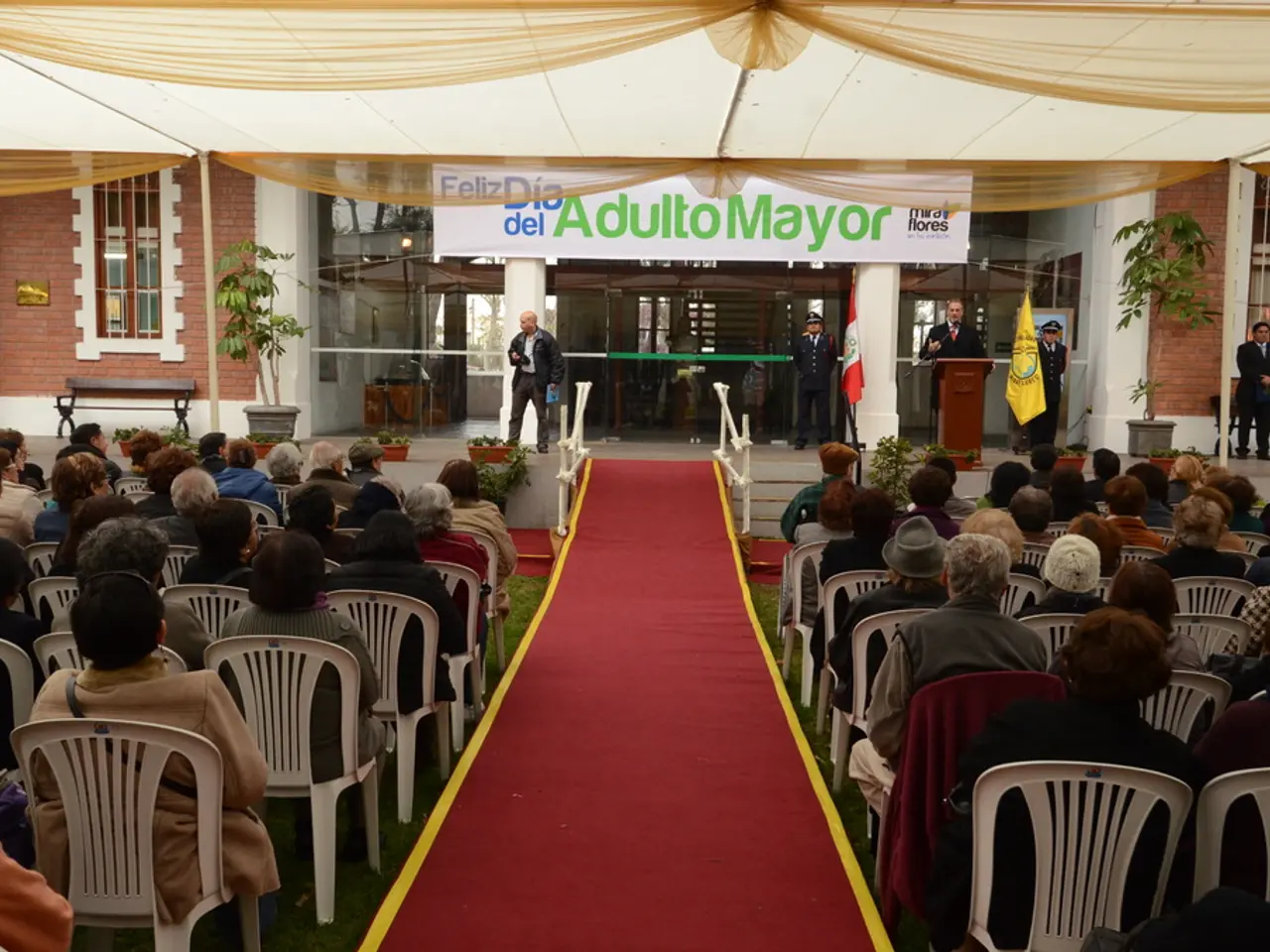Performing artists for "Evita" rehearsed on the spacious outdoor stage at the Red Gate venue
The open-air stage in Augsburg played host to the premiere of the "Symphonic Version" of the beloved musical "Evita," a production that brought together a talented ensemble and a live orchestra under the direction of Ricardo Fernando.
Fernando, known for his love of "Evita" and his experiences with tango dancing in the streets of Buenos Aires, faced significant choreography challenges in fusing Latin dance styles with modern and contemporary movement. The ensemble, made up of seven mixed pairs, wore costumes from the 1930s to the 1950s, adding to the authenticity of the production.
One of the key challenges for the ensemble was balancing the authentic Latin dance influences with contemporary choreography to reflect the musical’s Argentine setting and emotional intensity. The choreography, created by Fabian Aloise, demanded strong technical skill and stamina from the ensemble to maintain the thrilling pace and energy throughout the show.
Sustaining high energy and vibrant movement quality across the entire ensemble was another challenge. This was crucial in creating an immersive and visually striking spectacle on the open-air stage. Ensuring clear storytelling through movement, with intentional and expressive acting choices embedded in the choreography, was also essential in supporting the narrative of Eva Perón’s rise and political drama.
Coordinating complex group dynamics and formations outdoors, where spatial awareness and projection are critical for visibility and impact, was another hurdle. The ensemble had to adapt to the conditions of the open-air stage, including the smooth wooden floor, which posed challenges due to potential unevenness or slipperiness.
To accommodate these conditions, special shoes were used, and the choreography was adapted to suit the open-air stage. The dancers also had to consider practicing in the heat and protecting themselves with sunscreen.
The collaboration on "Evita" began with the concept of director Florian Mahlberg. The Augsburg Philharmonic played live in the orchestra tent next to the stage, providing a symphonic sound body with additional orchestral voices, as heard on Broadway. The ballet ensemble was very present on stage, singing in addition to dancing, such as during the poignant Requiem at the beginning of the performance.
The choreography included various dance styles, such as Latin American rhythms and jota, a traditional Spanish dance. The audience applauded during the intermission and at the end of the premiere, showing their appreciation for the ensemble's efforts in mastering the fusion of Latin and modern styles, delivering high-energy performances with clear dramatic intention, and adapting movement for an open-air environment to create a compelling storytelling experience.
Entertainment and music were a central part of the experience during the premiere of the "Symphonic Version" of "Evita." The choreography, led by Fabian Aloise, incorporated various dance styles, including Latin American rhythms and jota, to reflect the musical's Argentine setting and infuse the performance with a vibrant energy that resonated with the audience.








